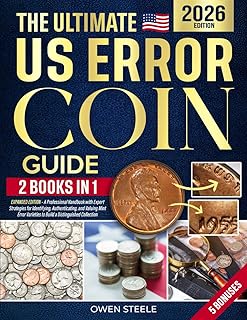Investing in rare coins holds the allure of joining the ranks of numismatists—a community of collectors, scholars, and dealers united by an appreciation for currency's artistic and historical significance. Unaffected by the daily swings of the stock market, rare coins possess a stable allure, their worth rooted in scarcity and desirability rather than economic indicators. Captivating not only as a diversification instrument, but also as a hedge against market volatility, rare coins can be a wise investment choice when integrated thoughtfully into a well-balanced portfolio.
Investing in rare coins holds the allure of joining the ranks of numismatists—a community of collectors, scholars, and dealers united by an appreciation for currency's artistic and historical significance. Unaffected by the daily swings of the stock market, rare coins possess a stable allure, their worth rooted in scarcity and desirability rather than economic indicators. Captivating not only as a diversification instrument, but also as a hedge against market volatility, rare coins can be a wise investment choice when integrated thoughtfully into a well-balanced portfolio.
Understanding the Market Dynamics
The value of rare coins is dictated by the basic economic principles of supply and demand. The rarer a coin, the more it is likely to be sought after, driving its price upwards. A coin's worth is also enhanced by its condition, historical significance, and the narrative attached to it—all elements that enchant collectors and investors alike. This can lead to impressive profit margins, as history has shown, with prices of select coins increasing manifold over their original face value or metal content.
Historical Performance and Long-Term Potential
A glimpse into recent decades highlights the remarkable profitability of rare coins. For example, during specific periods, elite coins have seen their value skyrocket, a testament to their potential as a long-term growth asset. However, it is important not to misconstrue rare coins as a panacea for financial planning; they should instead complement a broader, more diversified investment approach.
Evolving Industry Practices
The introduction of third-party grading services in the 1980s marked a pivotal turn in reducing risk and setting a standardized benchmark within the coin industry. The assurance of authenticity and quality offered by organizations such as PCGS and NGC has paved the way for greater investor confidence. In today's information age, an array of resources is at the investor's fingertips—from prolific online content to local coin clubs.
Beginning Your Investment Journey
Before diving into the depths of rare-coin investing, one should consider embracing the guidance of those who have charted these waters. Whether through mentorship or connecting with a community at a coin club or show, the insights gained can be invaluable. The American Numismatic Association is among such resources, offering education and support to enhance one's numismatic knowledge.
The Rarity and Stability of Rare Coins
Against the backdrop of fleeting trends and the volatility of technology stocks, rare coins stand as enduring artifacts of culture—appreciating silently as years pass. Their charm does not lie in short-term speculation but in a steady ascent, patiently rewarding the foresighted investor. Crucially, it's pivotal to remain vigilant of potential bubbles even within this seemingly static market—research, analysis, and expert counsel cannot be overestimated.
Integration into a Diverse Portfolio
Rather than occupying the center stage of an investment portfolio, rare coins should appear as diversifiers—spicing up the mix and injecting a degree of stability. Their inclusion necessitates a well-rounded array of assets, including bullion, U.S. coins of historical import, and perhaps international pieces of fascination.
Risks and How to Avoid Them
As with any high-value collecting sphere, counterfeiting and the alteration of coins pose a threat to the unwary investor. Education is the key to discernment, allowing one to differentiate between a genuine rarity and a convincing facade. Acquisitions should be exclusively through reputable channels, and third-party grading and certification seen as a stamp of security.
Putting It All Together
Investing in rare coins invites a marriage of passion and financial prudence. It's a realm that requires a connoisseur's eye and an investor's foresight—a pursuit that combines art and economics. The path to becoming a savvy rare-coin investor is paved with consistent learning, vigilant observation of market trends, and a network of trusted advisors.
In sum, rare-coin investing provides not just the thrill of owning a piece of history, but also an opportunity to craft a resilient, diverse financial portfolio. With careful stewardship and a thirst for knowledge, the pursuit of numismatic greatness beckons. It's a journey that's as enriching as the returns it promises, a tangible connection to bygone eras that resonates powerfully in the present.
Information for this article was gathered from the following source.




